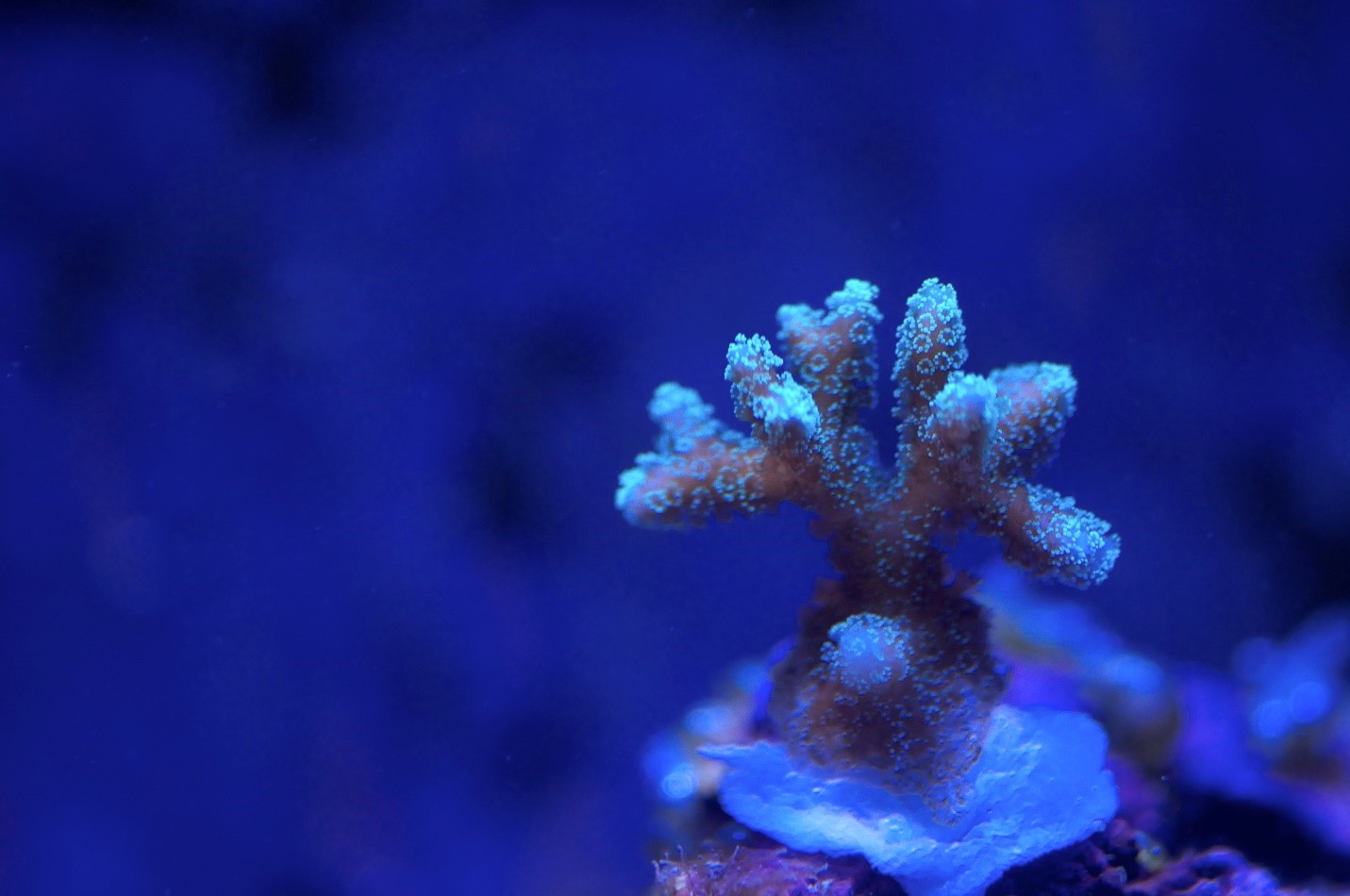Some corals are more resilient to acidifying oceans than we thought
But warming temperatures remain deadly
Lexi Krupp • December 13, 2017

What we identify as coral on a reef is actually a colony of thousands of individuals, called polyps, each about the size of a large raindrop. At the base of each polyp is a hard skeleton, constructed as they grow, which forms an architecture that many other sea creatures rely on for shelter and to find food. [Image Credit: Flickr user Eric Danley | CC BY 2.0]
Marine creatures, from spiky sea urchins and tiny phytoplankton to shelled mussels and bright coral, construct their shells or skeletons using the same mineral found in a Tums antacid tablet: calcium carbonate. Scientists have long assumed that these organisms, known as calcifiers, incorporate calcium carbonate into their bodies directly from the surrounding water.
Under this model, increasing carbon pollution would impact this process — more than a quarter of carbon dioxide in the atmosphere is absorbed by the sea, making the ocean more acidic, according to the National Oceanic and Atmospheric Administration. This chemical change puts calcium carbonate in short supply, limiting calcifiers’ ability to build their skeletons.
As we continue to dump greater quantities of carbon into Earth’s atmosphere and the oceans grow more acidic as a result, a better understanding of exactly how sea creatures develop could prove critical to predicting their fate in a changing environment.
Now, a growing body of research suggests this old model for explaining how calcifiers build their external structures is flawed. Many calcifiers exert some control over the formation of calcium carbonate and are not simply at the whim of what’s available nearby.
No one was sure which calcifiers relied on this alternative process, and to what extent, to assemble their mineral components. “It was suggested for coral,” says Alberto Pérez-Huerta, a geologist at the University of Alabama, “but there was not proof.” Until now.
Certain species of coral do not rely on the concentration of calcium carbonate in seawater to form their skeletons, according to research by Tali Mass, a marine biologist at the University of Haifa in Israel. Instead, the coral build their scaffolding under a different chemical process that combines calcium particles from the sea with carbonate particles that the coral manufacture inside their tissues. The ingredients combine in what’s called an amorphous phase — a solution that’s not quite a liquid and not quite a solid, says Mass.
Understanding how corals use this amorphous phase to construct their skeletons presents a challenge: scientists only have a short window to observe what’s happening at the cellular level before the coral skeleton crystalizes and assumes its final, solid form.
This is why Mass teamed up with physicist Pupa Gilbert, a physicist at the University of Wisconsin, to look at fresh samples of hood coral polyps, Stylophora pistillata, using powerful X-ray imaging from the Advanced Light Source at Berkley. Their findings were published in Proceedings of the National Academy of Science in August.
The amorphous mechanism is thought to be commonplace, observed in sea urchins, clams and abundant single-celled algae called coccolithophores, says Pérez-Huerta. It’s likely used by other coral species as well, Jeana Drake, an oceanographer at the University of California, Los Angeles, wrote in an email. She found evidence that a different species, stony coral, begins skeletal construction inside its cells — another indication of the amorphous phase — in a paper published on October 23rd in Current Biology.
However, the fact that some coral species are not dependent on calcium carbonate in the ocean provides only a menial safeguard against greater implications of carbon pollution. A more lethal threat, says physiologist Denis Allemand, the director of the Scientific Center of Monaco, is rising ocean temperatures.
Warming waters denature proteins important in skeleton construction, says Pérez-Huerta. They also wreak havoc on coral’s main energy source, Drake adds. When water is too warm, coral expel the algae living in their tissues, which provide the bulk of coral’s food and give them their florescent, rainbow colors. The desertion of algae results in mass bleaching events, like those visible throughout most of the Great Barrier Reef.
So, even if some coral can successfully manufacture their skeletons in more acidic waters, “that doesn’t mean the organism as a whole is happy,” Drake wrote. If coral starve to death, she says, the way they grow won’t matter.